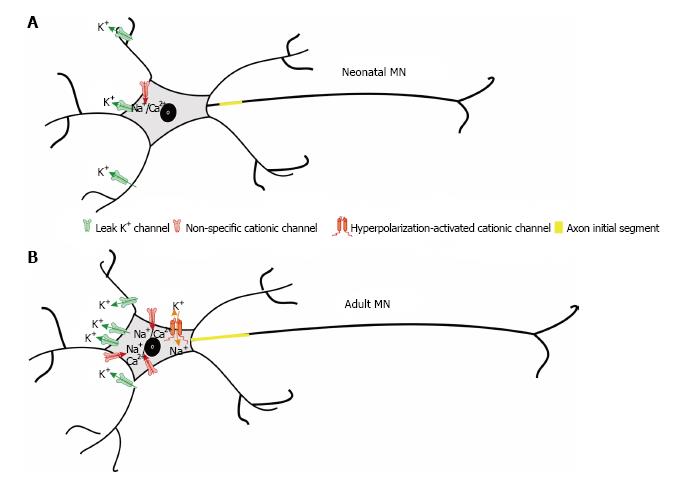Copyright
©The Author(s) 2015.
World J Neurol. Dec 28, 2015; 5(4): 113-131
Published online Dec 28, 2015. doi: 10.5316/wjn.v5.i4.113
Published online Dec 28, 2015. doi: 10.5316/wjn.v5.i4.113
Figure 4 Hypothesis of mechanisms underlying input resistance and rheobase modifications during development.
Schematic drawings illustrating proposed differences in ion channels (number, type and distribution) and axon initial segment (length and proximity to soma), between neonatal (A) and adult (B) MNs. Note that, in the adult MN, the axon initial segment is represented larger and closer to soma. Besides, in the neonatal MN, leak potassium channels are located more distal to the soma and in a less number. Hyperpolarization-activated cationic channels responsible to the sag are only present in the adult MN, with a high number of non-specific cationic channels responsible for the persistent calcium and sodium currents. MNs: Motoneurons.
- Citation: Carrascal L, Nieto-González J, Pardillo-Díaz R, Pásaro R, Barrionuevo G, Torres B, Cameron WE, Núñez-Abades P. Time windows for postnatal changes in morphology and membrane excitability of genioglossal and oculomotor motoneurons. World J Neurol 2015; 5(4): 113-131
- URL: https://www.wjgnet.com/2218-6212/full/v5/i4/113.htm
- DOI: https://dx.doi.org/10.5316/wjn.v5.i4.113









